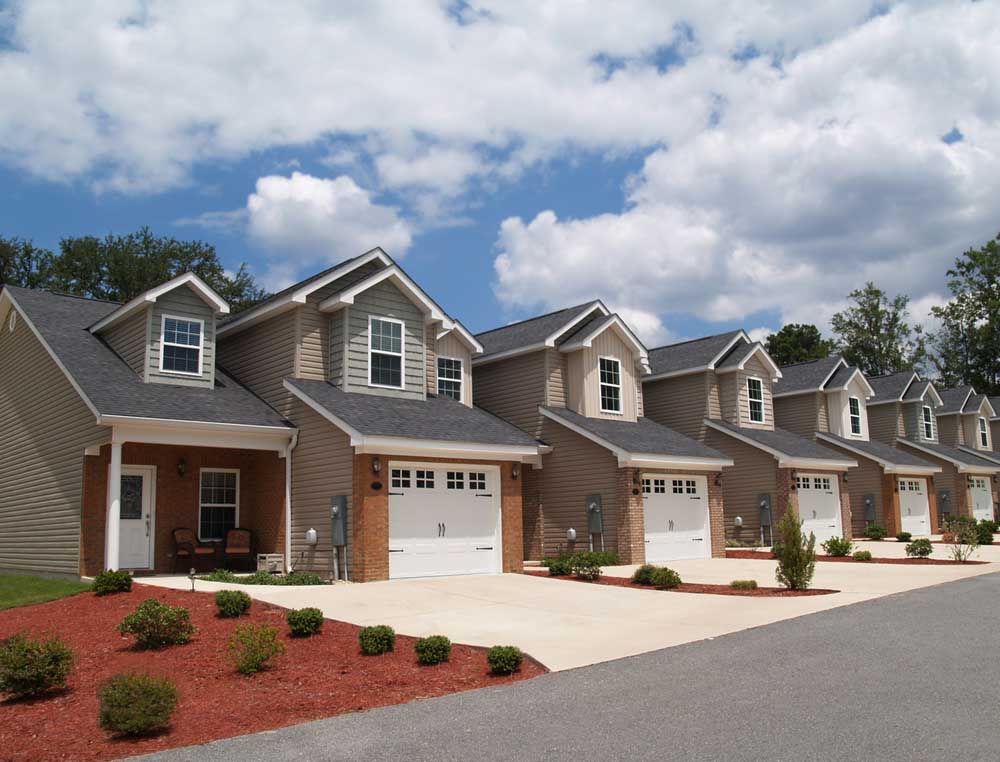How age ghettos cheat the old and young
Published 12:00 am Friday, December 26, 2014

- Courtesy Fotolia via Tribune News ServiceSociety’s increasing segmentation and segregation into age ghettos has created an environment of sameness void of diversity.
I used to dread visiting my wife’s parents in their retirement community in Florida. They had left their co-op apartment in a diverse and vibrant neighborhood in Manhattan when my mother-in-law was having trouble breathing the particle-laden New York City air. In his retirement, my father-in-law had begun a new life as an artist and had rented a studio several blocks from their apartment where he stashed the materials he gathered from the sidewalks of industrial neighborhoods and from the bodies of abandoned cars. From this strange mix of Lucite heels and Cadillac insignias, he created intriguing assemblages, some of which his children continue to cherish.
The move was particularly hard on him. Century Village — an age to which the residents aspired — housed close to 10,000 people in clusters of low-rise buildings so similar to one another that my wife and I were fearful of going out for walks in the evening and not being able to find our way back. It was a sterile place, though the residents would have preferred characterizing it as neat. No chance here of coming upon a stash of Lucite heels. The only mess — and a controlled one at that — was in the ceramics shop in the recreation center, where people turned out identical bowls, ashtrays and lamp bases.
Diet of sameness
But what was most striking about the place was its homogeneity. Yes, the population was almost entirely white and predominantly Jewish, but for the moment, it’s the age homogeneity that I’m thinking about. I believe there were stipulations, essentially housing covenants, that limited ownership to people above a certain age and that forbade the permanent presence of children. The grandchildren came to visit during school breaks — when they commandeered control of the pool — but other than that, the voice of the children was not heard. Although there was a sprinkling of early retirees, vigorous in their exercise habits and in their willingness to venture outside the bounds of the community for their entertainment and activity, there was a disconcerting sense of people gathered together for the primary purpose of waiting to die, listening intently for the next wailing ambulance siren.
Entering this world from the outside, one was forced to reflect on the advantages and costs of living in an age ghetto. There was an almost unbroken sense of tranquillity, which the residents certainly deserved after sometimes stressful and exhausting work lives. As they rode their tricycles through the community’s geometrically laid out streets or strolled to the community center for a lecture on the current political situation, they were safe in ways that couldn’t be guaranteed to aging people on the streets of the cities they had left.
But that peace and security was bought at the cost of being cut off from daily exposure to the whole range of human development and drama. No cute infants who give you hope that maybe the next generation will get it right, no adolescents with all their amusing affectations and posturing, no young lovers to remind you that you were there once yourself, no young parents, not yet aware of the heartache their children would bring them. Cut off from your place in the world and in your position on the life cycle always seemed deeply depressing to this outsider. It was a steady and uniform diet of bland food, devoid of any flavorful surprises.
No filters
My in-laws have been dead for many years, but I’ve returned to thinking about age ghettos in a very different context recently.
Although I retired from a life in schools and classrooms, working with students and teachers, more than a year ago, I’ve chosen to continue to inhabit that universe without benefit of a paycheck. There aren’t a lot of 75-year-olds wandering the hallways in most schools, but my presence is particularly jarring to both students and teachers because there’s almost never anyone in the building within 35 years of me. This hasn’t always been the case. In the past, the staff consisted of teachers across the spectrum from novices to near-retirees. But the demographics of the profession have changed. Teachers rarely spend their whole careers in the classroom. At best, they spend five or six years in daily contact with kids, and either leave teaching entirely or move up to positions where their exposure to students is much more occasional and indirect. I realize that I’m speaking from long experience in urban schools, many of them charters, where this age churn is particularly pronounced. I’m always surprised to discover that there are less turbulent school worlds where you can still find staffs with many 18- and 20-year veterans.
As out of place as the adults may find me, they are generally too polite and respectful to comment on or react visibly to my age. Not so for kids. My first encounter with this refreshingly unfiltered response came on a visit to the school that I had helped found, but had left 10 years ago, so that I was not a familiar figure to any of the children. I was standing by the door as the preschoolers returned from recess in their straggly imitation of a line. As one little boy passed me, he said: “You’re so old!” “Yes, I am, aren’t I?” I replied, although, truth to tell, I often have to be reminded how I’m perceived by others because in my mind’s eye, I’m nowhere near my actual age.
This year, I’ve been observing classrooms in a middle school where the age gap between me and the teachers ranges from 35 to 50 years. Three times in the last month, students have turned to me in my perch at the back of the room to ask, with different degrees of politeness, how old I am. I’ve been forced to develop strategies for how to deal with this question. “How old do you think I am?” — a question that usual produces howlers like “Forty? Fifty?” Their guesstimates all seem desperately old to these 12- and 13-year-olds. Sometimes I ask if they have grandparents and, if so, how old they are. Then I offer to tell them whether I’m older or younger than their grandparents are. I really knew it was time to leave the classroom when I discovered that I was older than one of my student’s great-grandmother.
Mixing it up
Just as in Century Village, there is a cost to schools having become age ghettos. I don’t believe age automatically imparts wisdom, but I do believe that being around a while longer than others gives you access to a larger bag of tricks. I also think that because of the dynamics of their own family situations, children need a variety of options for building adult relationships. Having geezers around may actually be useful to some kids, who are confronted with a sea of 20- and 30-somethings.
Perhaps I’m reaching for justifications for my presence in a world from which almost all my peers have departed. But I believe that our increasing segmentation and segregation into age ghettos comes at a cost. Most past societies and many that continue to exist in other parts of the world have found ways to keep the generations in closer proximity to one another. Our failure to do so contributes to the discontinuity and anomie that plagues us.
I’m left with an image of a public plaza in Veracruz, Mexico, where the residents come to dance in the style of danzon, a kind of ballroom dancing imported long ago from Cuba. The magically transformed space is filled with couples one would never see on an American dance floor — elderly women and teenage boys, grandfathers and 8-year-olds, and everything in between. There’s something that feels right about it, everyone moving together in stately fashion in this dance of life.






